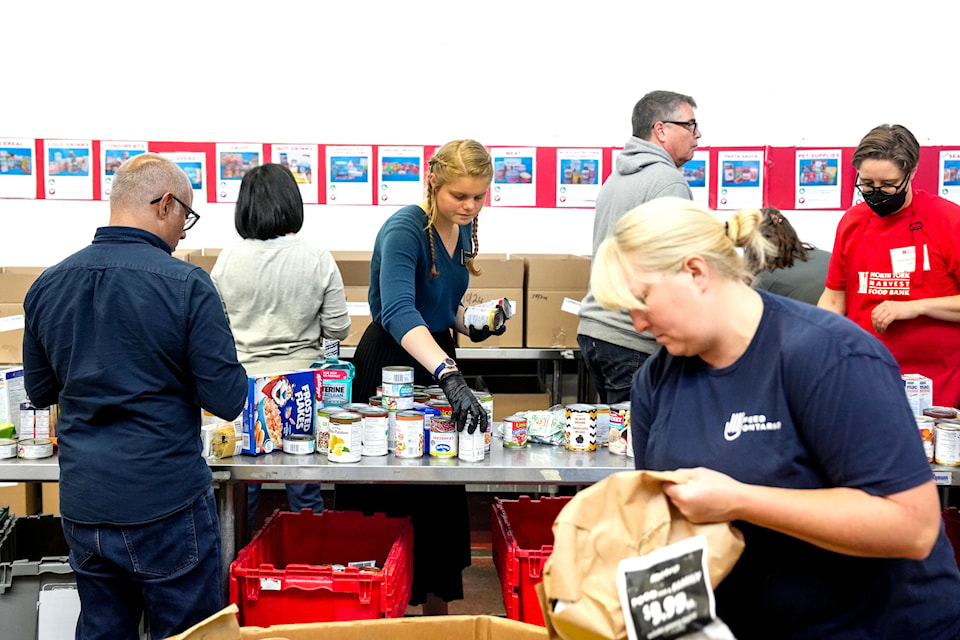Food bank use across Canada has reached unprecedented levels, with the Hunger Count 2024 report from Food Banks Canada showing more than two million visits in March alone — a six per cent increase from last year and a staggering 90 per cent rise since 2019.
This surge in demand is largely driven by the high cost of living, which has left many Canadians struggling to meet basic needs.
One of the most alarming trends highlighted in the report is the growing number of employed relying on food banks. Eighteen per cent of food bank users are now employed, the highest rate ever recorded.
Despite holding jobs, many individuals and families find themselves unable to afford necessities like food due to soaring rent and utility costs.
"I use the food bank about once a month. My rent takes up most of my income, so there’s very little left for food,” said Angelica Perez, a food bank user in Mississauga, Ont. “Without the food bank, I would struggle to get by.”
The demographics of food bank users are also shifting. A third of all food bank visits are made by children, with more than 700,000 visits recorded each month — an increase of more than 300,000 monthly visits since 2019.
Single-person households now account for 42 per cent of visits, reflecting the unique challenges faced by those living alone, including job insecurity and physical or mental health issues.
Patricia Mateja, an office volunteer at The Compass Food Bank and Outreach Centre on Lakeshore Road in Mississauga, said there is sharp rise in demand for food assistance, particularly among families with young children.
“The biggest need we have is for infants and formula,” she said. “Formula is very, very expensive.”
In response, The Compass has adjusted its services to better meet the needs of its clients. The organization now offers a variety of food options for children, including breakfast cereals, snacks, and even backpacks for schoolchildren.
Mateja said food banks must provide not only what they think clients need but also what their clients actually want.
The report also reveals a significant rise in food bank use among seniors, who now represent 7.7 per cent of clients, up from 6.8 per cent in 2019. Additionally, two-parent families account for 23 per cent of users, a significant increase from 19 per cent just five years ago.
The increase in food bank use has placed immense pressure on these organizations. At The Compass, Mateja described the growing strain on their resources.
“Our meal demands have gone beyond the numbers we used to experience,” she said, adding they rely heavily on donations and community partnerships to keep up with demand.
One potential solution, she suggested, could be adopting policies similar to those in France, where grocery stores are prohibited from discarding unsold food.
"If we could get fresh food like fruits and vegetables from grocery stores that would otherwise be thrown away, that would be a great help," she said. That would provide healthier options for clients, especially during the winter months when the food bank’s garden is not producing.
The impact of the food insecurity crisis is clear. According to Food Banks Canada, more than a third of food bank clients are immigrants or newcomers, many of whom face additional challenges in accessing support.
“When the war in Ukraine broke out, we noticed a big increase in people coming to the food bank from Ukraine,” Mateja said. “Even if they’re being sponsored by someone, they still have needs. And again, those needs are food.”
Food Banks Canada has called on policymakers to take action to address the root causes of food insecurity, including the housing crisis, inadequate social assistance programs, and low wages.
They stress the need for a “dual path” approach — one that provides immediate relief through food assistance while also addressing the systemic issues that keep people in poverty.
The rising demand for food assistance highlights the growing crisis faced by many Canadians, and organizations like The Compass are playing a crucial role in offering support. Mateja said long-term solutions require greater government involvement and community support.
“We all need to work together to address food insecurity in the years to come,” she said. “It’s not something that can be solved overnight, but with more support, we can make a difference.”
In the face of this crisis, Food Banks Canada is calling for more comprehensive policies to reduce food insecurity in Canada, emphasizing that lasting change will require a concerted effort from both the government and the community.


